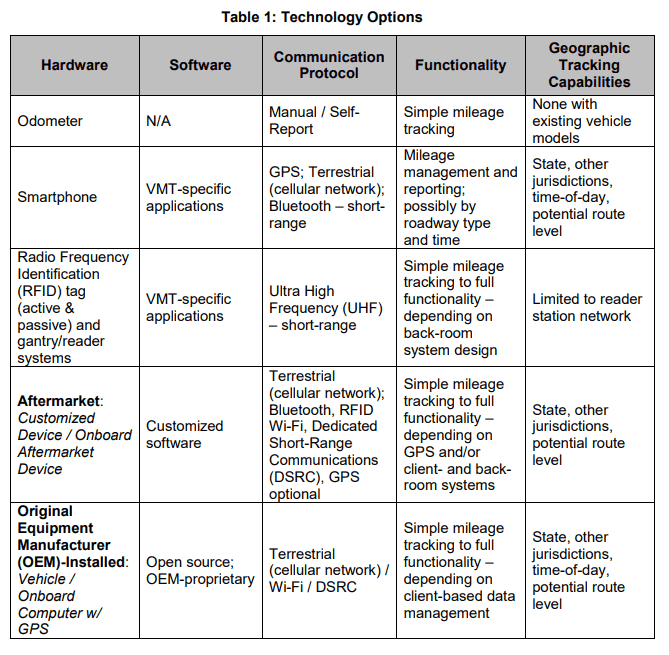The Biden administration is said to be readying a proposed multi-trillion plan for US infrastructure, inclusing funding for road and bridge repair and expansion.
But the usual question: How will it be paid for? There's no good answer to that one. While there is substantial agreement the federal tax on gasoline and diesel fuels needs to be raised for the first time since 1993, with traditional engines getting ever better mileage - and the rapid growth in electric vehicles that use no gas or diesel at all, reliance on fuel taxes alone a problem.
Enter the notion of a Vehicle Mile Tax, or VMT. As the name suggests, drivers would somehow be taxed based on each mile driven. But it's even more complicated than that - some proposals would charge different rates depending on where those miles are driven, so maybe more for urban driving then rural.
And how would the data on miles driven be captured? The analyts at the American Transportation Rsearch Institute (ATRI) have just released an excellent report on VMT, which included a nice summary of data collection options, as shown below:

Source: ATRI
Another research report a few years ago said it would take a bureaucracy the size of the IRS to enforce and collect a VMT. The ATRI report ran scenarios that considered collection costs from 10 to 40% of revenues.
This will take a long time to evolve, in SCDigest's opinion, but if e-vehicles take off as expected it will force the issue.
Any reaction to our Supply Chain Graphic of the Week? Let us know your thoughts at the Feedback button below.
Your Comments/Feedback
|